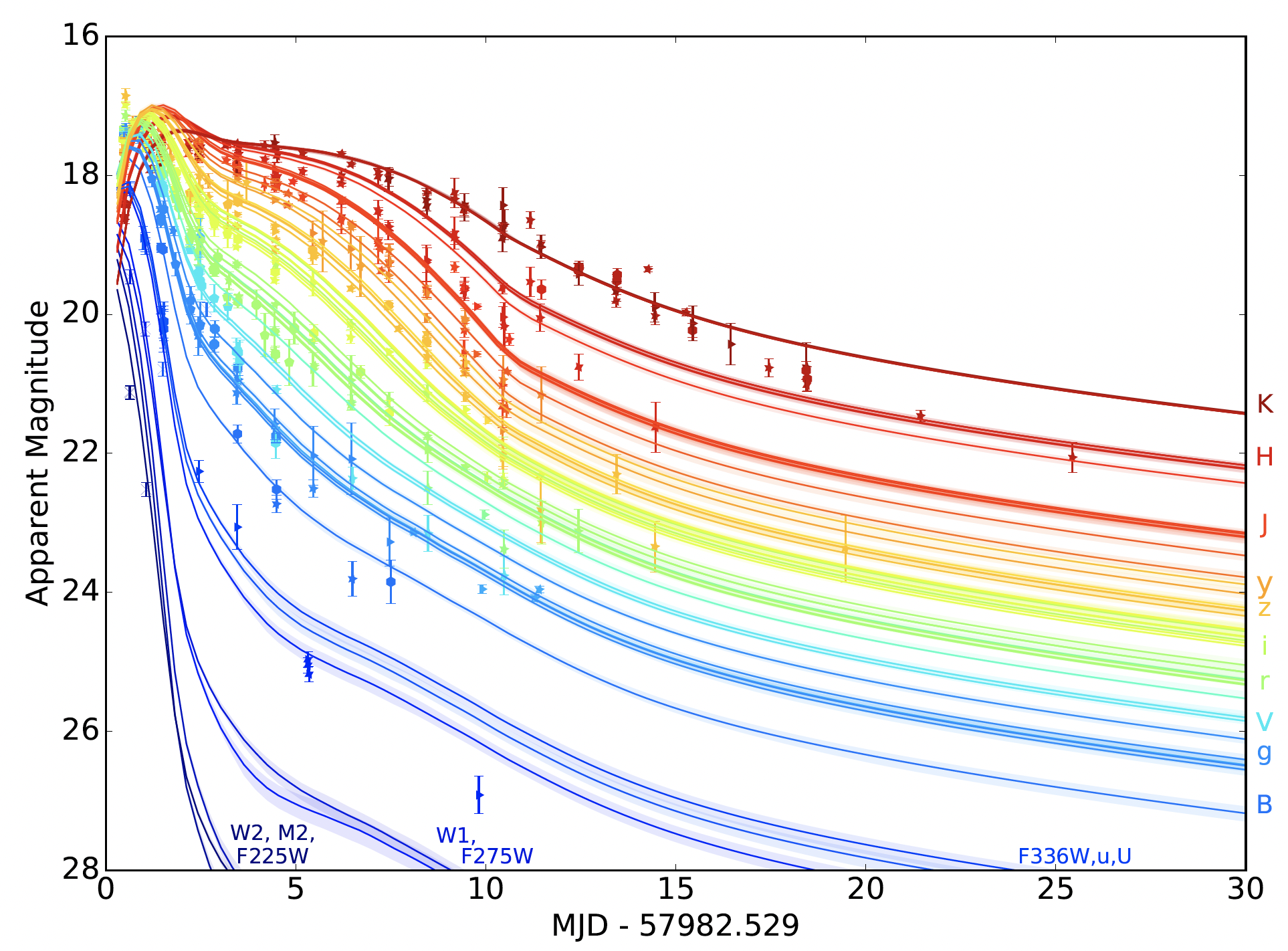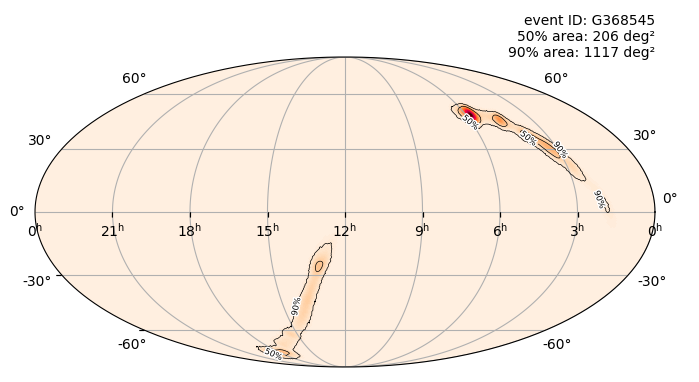Astronomy: Multi-messenger astronomy
Recent discoveries of both gravitational waves and electromagnetic radiation from a neutron star merger marked the dawn of a new era in multi-messenger astrophysics. GW170817 lit up the entire electromagnetic spectrum, spanning gamma-rays to radio, and for the first time, we saw possible evidence of r-process nucleosynthesis, the process by which half the elements in the periodic table heavier than iron are synthesized.
Heavy elements span atomic mass numbers between 60 and 250 with several elements filling the electronic d- and f-shells. Owing to the large number of line transitions, the opacity is very high and the emission from their radioactive decay gets shifted out of the optical bands and into the infrared (IR) bands. Therefore, the key to understanding the nucleosynthesis is in characterising the IR data.
This first discovery opens up many questions for future discoveries to answer. Are NS-NS mergers the only sites of r-process nucleosynthesis? Do NS-NS mergers produce heavy elements in the same relative ratio as seen in the solar neighbourhood? Are the heaviest elements in the third r-process peak synthesised, such as gold and platinum? Which elements are synthesized when a NS merges with a stellar mass black hole (BH)?
Most current models predict that the bright optical emission seen will be hostage to several parameters as illustrated in Figure. They predict that the optical emission will be suppressed if: (1) the mass ratio is large as in NS-BH mergers, or (2) the viewing angle is more equatorial, or (3) the velocities are lower, or (4) the opacity is higher, or (5) the remnant lifetime of the hyper-massive NS is relatively short.
Even if optical emission is present, it decays on day timescales. On the other hand, bright infrared emission from radioactive decay of heavy elements is expected to be ubiquitous and independent of geometry, opacity, remnant lifetime, and mass ratio. NS-BH mergers are predicted to have even more ejecta mass and hence, even more luminosity, in the infrared than NS-NS mergers. Moreover, the IR emission decays on week timescales. Thus, a systematic search for the electromagnetic counterpart to the full sample of NS-NS and NS-BH mergers can only effectively be undertaken in the infrared.

Credit: Villar et al. (2017)
The major roadblock in undertaking a systematic multi-messenger census is the lack of wide-field IR survey capability that matches the scale of the coarse GW localizations (tens of square degrees with three advanced GW interferometers). DREAMS is designed to provide the capability to detect the infrared counterparts to these events.

Credit: https://gracedb.ligo.org/superevents/S200316bj